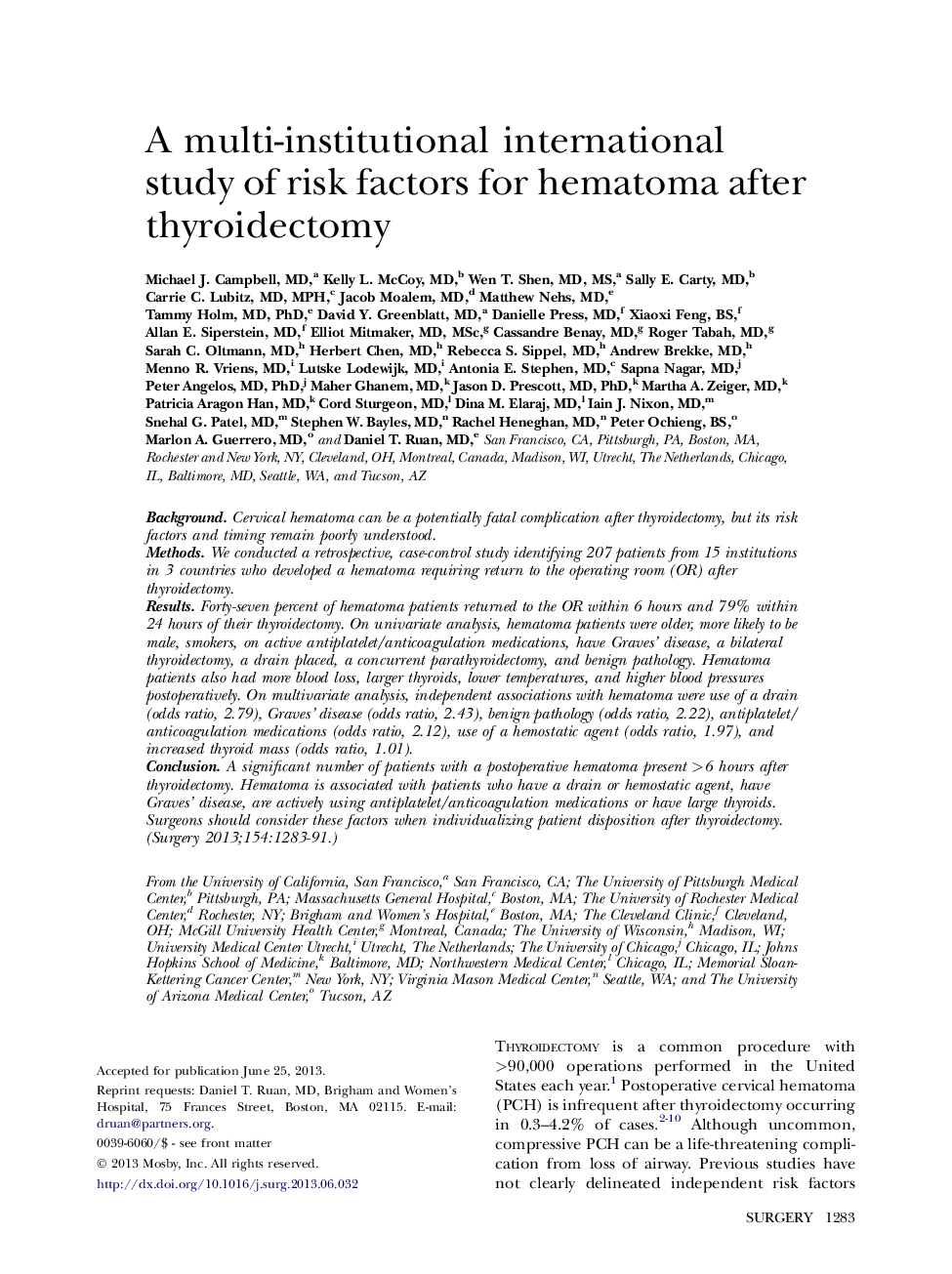| Article ID | Journal | Published Year | Pages | File Type |
|---|---|---|---|---|
| 4307057 | Surgery | 2013 | 9 Pages |
BackgroundCervical hematoma can be a potentially fatal complication after thyroidectomy, but its risk factors and timing remain poorly understood.MethodsWe conducted a retrospective, case-control study identifying 207 patients from 15 institutions in 3 countries who developed a hematoma requiring return to the operating room (OR) after thyroidectomy.ResultsForty-seven percent of hematoma patients returned to the OR within 6 hours and 79% within 24 hours of their thyroidectomy. On univariate analysis, hematoma patients were older, more likely to be male, smokers, on active antiplatelet/anticoagulation medications, have Graves' disease, a bilateral thyroidectomy, a drain placed, a concurrent parathyroidectomy, and benign pathology. Hematoma patients also had more blood loss, larger thyroids, lower temperatures, and higher blood pressures postoperatively. On multivariate analysis, independent associations with hematoma were use of a drain (odds ratio, 2.79), Graves' disease (odds ratio, 2.43), benign pathology (odds ratio, 2.22), antiplatelet/anticoagulation medications (odds ratio, 2.12), use of a hemostatic agent (odds ratio, 1.97), and increased thyroid mass (odds ratio, 1.01).ConclusionA significant number of patients with a postoperative hematoma present >6 hours after thyroidectomy. Hematoma is associated with patients who have a drain or hemostatic agent, have Graves' disease, are actively using antiplatelet/anticoagulation medications or have large thyroids. Surgeons should consider these factors when individualizing patient disposition after thyroidectomy.
